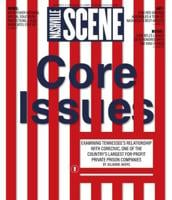It was my 31st first date, and I was running late.
We were meeting on New Year’s Day, my favorite holiday. Forget the sparkle and fizz and cold legs of New Year’s Eve. Give me the intoxicating possibility of Jan. 1.
I spotted that night’s date, Subject 31, standing by the bar in a dark jacket. I adjusted my lab-coat-like cream sweater, mentally reviewed my goals for the evening and walked toward him.
I’d been studying the mechanics of flirting. In high school, I’d watched my best friend do it effortlessly: a hair flip, lingering eye contact, a casual knee touch. It came instinctually to her, but I felt like Jane Goodall observing a strange creature’s behavior in the wild. Telegraphing my desire in that way felt unthinkably vulnerable.
Then I’d gotten married at barely 22 and skipped a decade of education in the art of flirting and dating. But on New Year’s Day, nine months out of a seven-year marriage, I was determined to make up for lost time.
Dating post-divorce became a science — not an art — with hypotheses, tests and controls. I approached it with the clinical detachment of an anthropologist and kept detailed field notes. I was looking for data points, not love. Statistically, I’d ruled love out as a possibility.
If I take my boyfriend to my hometown, what will be left for him to see?
To achieve an adequate sample size, I filled every spare night with a first date. Each new person was a research subject. Everything was a variable I could test — even my own personality. Especially that. I auditioned a new self each night.
The Cool Girl persona yielded a 100 percent second date success rate, but required unsustainable levels of interest in cryptocurrency and craft beer. Haunted Artist With a Dark Secret was a universal dud. My Pool-Playing Bisexual persona turned out not to be a persona at all, confirming another hypothesis I’d long suspected to be true.
My experiments had yielded a wealth of quantitative and qualitative data:
Subject 8 had also been married before, and had multiple children whose existence he kept hidden well into the third date. (Subject reported his wife had gotten really into crystals — “like, thousands of dollars worth of crystals” — shortly before announcing her intentions to leave him.)
Subject 12 told me she’d never met someone with whom she had as much intellectual chemistry, and then invited me into my first four-way dance-floor kiss. (Misnomer, logistically impossible.)
Subject 25 had a British accent and loved blues music from the Deep South.
Subject 30 kept saying he would make me dinner but kept asking me to meet up at bars instead. (I went, for scientific purposes.)
At the bar, Subject 31 seemed nervous. I always liked that moment of initial impact, when the night is all possibility and no reality quite yet. I hugged him hello and buzzed about how nice it was to meet him. (Did I talk too much at the start of first dates? I noted this as a variable for future testing.)
He already had a drink, and I ordered the same — a negroni, even though I find them bitter. I suggested bar seating, one of the best tools in my dating arsenal: It allows for physical proximity without requiring constant eye contact. Perfectly positioned for a casual knee touch.
“We look like characters in a movie, me in all black and you in white,” Subject 31 said as we sat down. “Classic hero/villain.”
The more obvious comparison would have been bride and groom. I’d been experimenting with how soon to bring up the divorce with a new person. Subject 31 was in Control Group A, which got a first date disclosure. But that was more of a second-drink conversation.
“Very cinematic,” I agreed.
As we talked, I was surprised to find myself attracted to Subject 31, a rare occurrence in my data set. I activated flirting protocol. The timing was optimal to touch his knee — but he was too far away. When he went to the bathroom, I moved his chair closer to mine with a long metallic screech that drew every eye in the room. (Normally I wouldn’t interfere with data collection, but this was an outlier.) When Subject 31 returned, he didn’t seem to notice, but our legs brushed under the bar.
Our conversation turned to the topic of love, which I’d been studying like a Ph.D. student with a thesis deadline approaching. I told Subject 31 the definition of chemistry I’d read recently: when you can notice someone appreciating you.
“I hope you can notice me appreciating you,” he said.
We talked for nearly four hours. (Two-hundred percent longer than average first-date duration.) As we were leaving, he made a list of all the books we’d recommended to one another on the back of the receipt. His handwriting was pleasingly sharp, with hard angles and bold downstrokes. I found myself thinking how lovely it would look in the margins of a borrowed book.
Subject 31 (smelling increasingly good) walked me (experiencing unprecedented lapses in clinical distance) to my car and gave me a farewell hug. (This despite the researcher’s nonverbal cues inviting escalation.)
Driving away, I realized a fundamental flaw with my experiment. I hadn’t accounted for some critical variables. My clinical detachment had given me a sense of control — but what had I been missing out on? Leg brushing. Handwriting. The unexpected glow of mutual appreciation. The decidedly unscientific butterflies in my stomach.
Revised hypothesis: Vulnerability and risk cannot be optimized out of the process. In fact, the unpredictable, surprising, messy, human nature of real connection might be the whole point.
(Note: Additional testing required. Currently seeking new research participants.)
Lane Scott Jones is a Pushcart Prize-nominated writer and speaker from North Carolina, traveling full time since 2022 and documenting the journey in Second Rodeo, a newsletter about lifestyle design.
Plus what to read, watch and listen to on Valentine’s Day







